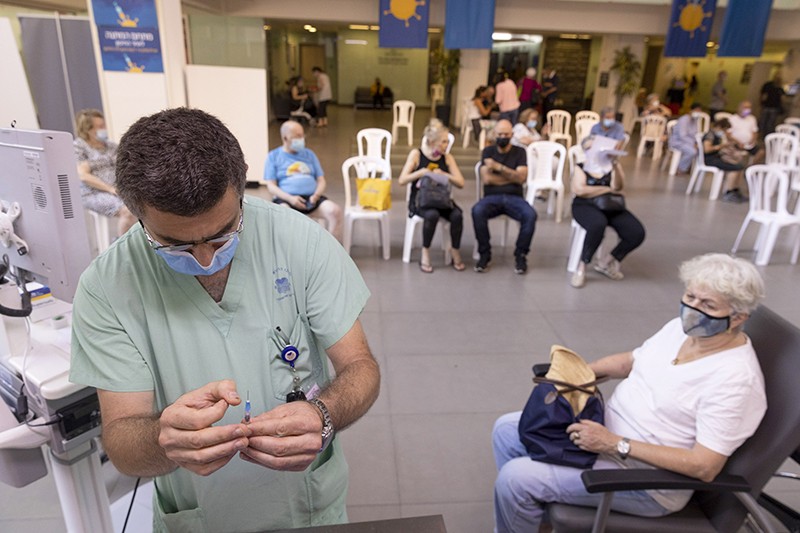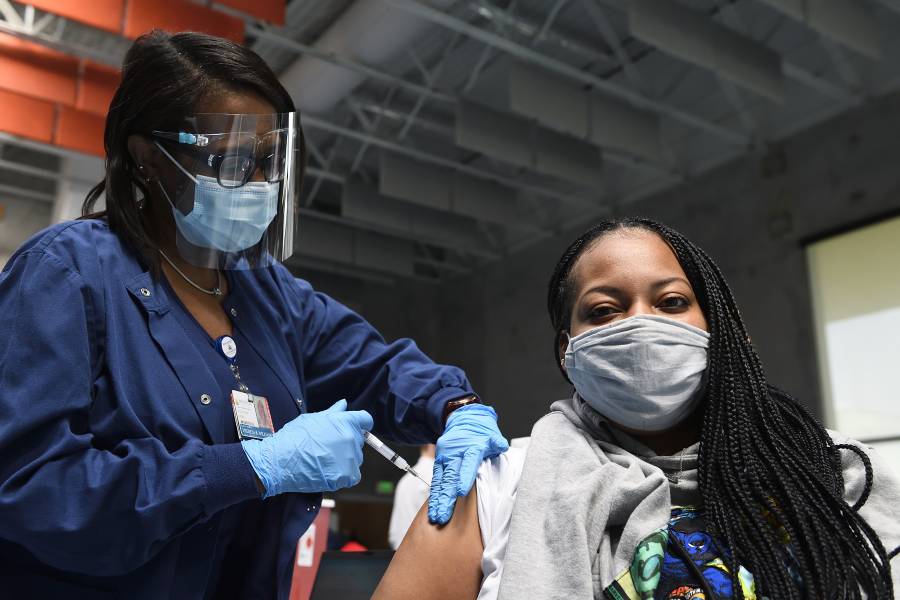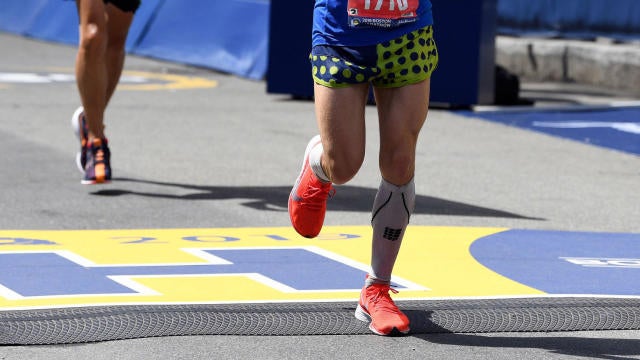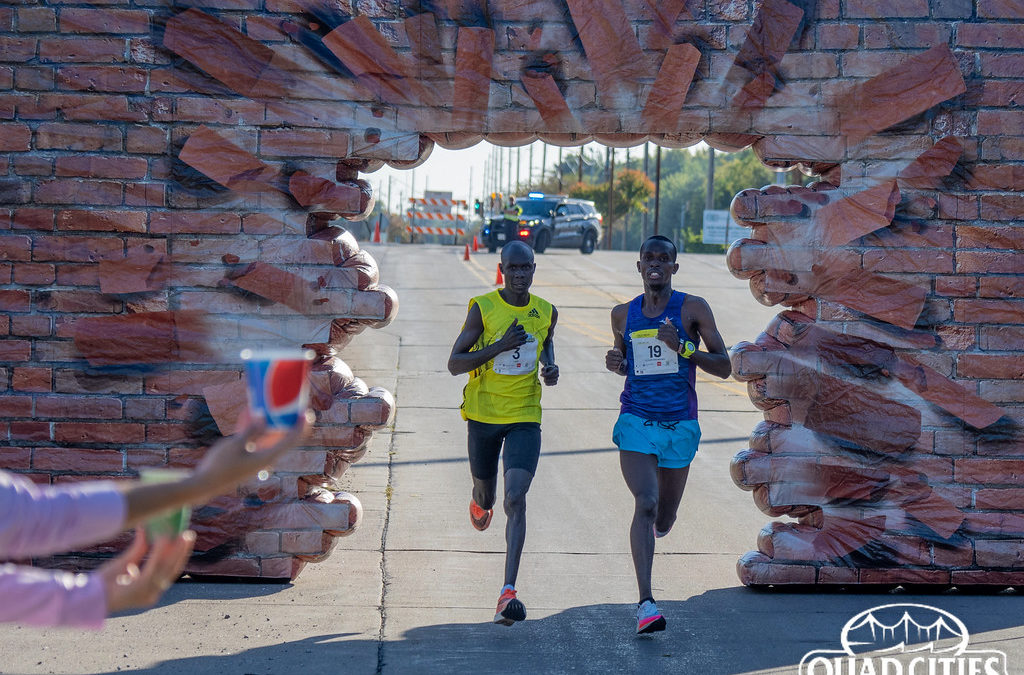"There are some important practical considerations, in addition to medical/scientific ones."
"[First, it's harder to confirm a previous infection than to track vaccination. Early in the pandemic, when testing centres were overwhelmed, many people were diagnosed with 'COVID-19' based on symptoms only. But other viruses can cause similar symptoms, meaning] there is a considerable risk that someone who was misdiagnosed would remain vulnerable to infection while assuming they are immune."
Matthew Miller, associate professor, Michael G.DeGroote Institute for Infectious Diseases, McMaster University, Hamilton
"Back before we even knew we'd have vaccines so soon, many countries and groups who were strongly opposed to lockdowns and public health measures were using the argument that the quickest way to establish herd immunity and get back to normal would be let the virus run wild -- a reckless approach that would have resulted in far more deaths than we have already seen."
"Having said that, personally I feel immunity is immunity and immunity from natural infection contributes to herd immunity in the same way that vaccine-induced immunity contributes to herd immunity."
"But I DEFINITELY don't think anyone, anywhere should have 'ripped off the Band-Aid' to quickly establish herd immunity."
Rodney Russell, professor of virology and immunology, Memorial University, Newfoundland
"The argument is, 'See, they don't really care about the science, all they care about is their vaccine agenda'."
"It's really kind of a stealth way to critique vaccine policy."
"Natural immunity has become an anti-vaxxer talking point."
Timothy Caulfield, health policy expert, University of Alberta
 |
Third-dose COVID-19 vaccine 'booster' programs have already begun in Israel, and data about their effectiveness are starting to come in. Credit: Kobi Wolf/Bloomberg via Getty
|
There are some issues with post-COVID immunity and the immunity conferred by vaccines as opposed to those presumed to be present in the wake of recovery from a COVID infection, that are controversial, misunderstood, complex and little discussed. The type of immunity called 'natural immunity' resulting from a prior bout with the coronavirus is touted by some as sufficient unto itself, worthy of recognition, and those having natural immunity are to be regarded as fully immunized, as much so as those who have been treated with two vaccine doses.
The issue is one that concerns officials in that it may lead to some people making the decision to become infected with COVID, rather than submit to a COVID-19 vaccination. In so doing, risking serious consequences; hospitalization, Long COVID, even death. Moreover, the messaging to the public of the imperative to be properly vaccinated as protection against contracting COVID can be muddied, and ultimately lost.
Recent studies on the other hand, suggest as well that immunity gained with an infection can provide formidable protection against the SARS-CoV-2 virus; that people previously infected and then follow up with vaccination may turn out to be the most fully protected of all. Leading some people who have recovered from COVID to complain at the unfair treatment in being shut out of non-essential businesses; even terminated from employment should they not agree to being vaccinated.
"Problems linger", explained Dr.Miller, in that even if lab-confirmed prior infections were to be considered since as testing capacity increased and was offered to anyone, studies show that those who have asymptomatic or mild infections mount a much less robust immune response than those who exhibited coronavirus symptoms "and also less robust than those who have received a full vaccine series".
There are, in fact, no clear safety signals in association with inoculation of the previously infected, so it might appear prudent to require the same proof-of-vaccination for the COVID-recovered, from a standpoint of reliably standardized policy.And, points out Dr.Russell of Memorial University, the Delta strain complicates the situation by its very steep infectability. People infected in the pandemic's early stages would have seen their immune system respond to a weaker variant "So do we know they can handle more recent variants months or potentially years after their original infection?"
And then there are the results from two recent studies which suggest that immunity from a previous infection confers longer-lasting and stronger protection. Furthermore, people who never had COVID and received two doses of the Pfizer shots were six to 13 times more likely to contract Delta than those who were previously infected with COVID, according to a large study of tens of thousands of Israelis. Yet another version of the same study found the COVID-recoverd who were unvaccinated were twice as likely to be reinfected as the COVID-recovered receiving a single dose of Pfizer-BioNTech's vaccine.
Virologist Shane Crotty wrote in Science magazine that people with a previous SARS-CoV-2 infection "mount unusually potent immune responses to COVID-19 vaccines". Which may explain why it is they are also likelier to experience side effects such as fever and fatigue. Published in Nature, a study out of Rockefeller University found memory B cells which can linger for decades unleashing potent antibodies every time the body is re-exposed to COVID outperformed memory B cells produced by mRNA vaccines.
The body's immune system reacts to the entire virus, not merely the spike protein generated from the vaccines, with natural infection. And then there is that little matter of natural infection that "can also kill you", pointed out Michel Nussenzweig of Rockefeller University. All of which leads inevitably to the message that everyone should become vaccinated, irrespective of previous infection, and nor should anyone intentionally plan to become infected with COVID to spur 'natural immunity'.
 |
| Johns Hopkins University |
"[The problem with considering the once-infected as potentially having adequate immunity], is that we have no idea how much immunity they had then, or now."
"But with vaccination, we at least know that everyone received the standard amounts of the vaccines."
Rodney Russell, Memorial University
Labels: 'Natural Immunity'
Studies, COVID Vaccinations, COVID-19, COVID-Infected, Immunization, Vaccine Hesitant


/cdn.vox-cdn.com/uploads/chorus_image/image/69916571/AP21270657892054.0.jpg)




/https://tf-cmsv2-smithsonianmag-media.s3.amazonaws.com/filer/a9/88/a9888208-0cd3-4c82-a6d8-79c4a54e75a8/llamas.jpg)





